

Unclaimed: Are are working at Kontent.ai ?
Kontent.ai Reviews & Product Details
Kontent.ai is a headless CMS software best known for being a modular content platform that lets developers and marketers plan, create, and deliver experiences that look and feel great across various channels. It’s built to seamlessly support the working dynamics of teams, facilitating easy content production, modular content reuse, real-time collaboration, and approvals.

| Capabilities |
|
|---|---|
| Segment |
|
| Deployment | Cloud / SaaS / Web-Based |
| Support | 24/7 (Live rep), Chat, Email/Help Desk, FAQs/Forum, Knowledge Base, Phone Support |
| Training | Documentation |
| Languages | English |

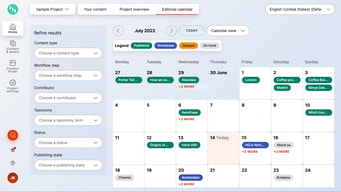
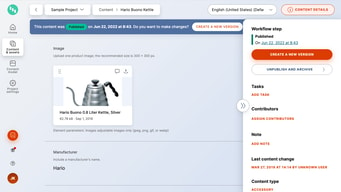
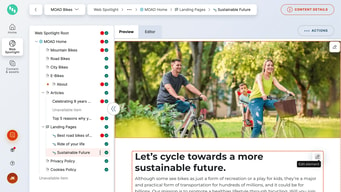
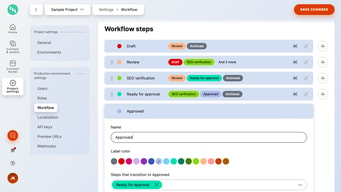
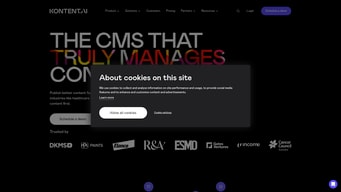
Compare Kontent.ai with other popular tools in the same category.

cross-platform data sharing, modeling data, references on other models, webhook push notifications on data change, email notification if webhook is not working.
there are missing some primitive values like boolean, UI was little confusing when I started using it. Didn't find how to disable some data fields (some of our data is coming outside and content users can't edit them)
collecting data from api (from another CMS) and enriching them with user-edited data. Benefit: multilevel of data update => editing Kentico when you want fast change, not depending on outside data
The program is very 'to the point' and no time is used inefficiently. I appreciate that this event is done live, and the company is so good at what they do that it is seamless and appears it could have even been recorded. Every year I come back because I find it interesting and intriguing to learn more about the available features. I also the variety of topics covered.
Unfortunately, there is not much downtime during their event. This causes the inability to truly have a lunch break if you need one. If you take one, odds are you likely will miss something that could be interesting, important, or intriguing.
With the event, I am solving problems related to efficiency in our workplace. I have realized there are always more features I wasn't aware of until I attended this event.
Kentico enabled us to create website content quickly, with the minimum of fuss and without having to bring in IT support. It also gave a preview of the new content in context so we could proceed confidently with a clear picture of how the finished work would look. Because we had a team that worked on content together, it was helpful to have a simultaneous editing option that enabled them to edit the same piece but not delete the work of their colleagues. It was user-friendly and focused on the things we needed and I appreciated that.
Nothing. It's a good CMS from a good, supportive company.
The problem Kentico solved was that our content creators were able to put together high-quality website content without having to involve our IT people.
Flawless content modelling and content creation process.
Asset management as such is not a strong part of Kentico Kontent, but this won´t last for long.
The whole content creation process in one place. From brief to publication including planning, scheduling and extensive collaboration.
ease of use and inputing content. User can create complex content (with inline content of different type) ractically wihtout treining. Very intuitive.
Nothing, really. It can be slow at times?
Content and multimedia data storage for tens of websites. Centralization and ease of control of content
Structure of platform, easy and quick translations
I think there is nothing that i disllike, all is good and logically structured
For forst time i have some problems with log-on credentials, but operator from platform help me
Kentico Cloud is a rapidly evolving product that is consistently adding new features. But the part I like the most about the platform is the absolute speed at which the Kentico Cloud API delivers content to our applications. It is faster than I thought possible.
Sometimes the user interface is less than stellar when it comes to large implementations with many content items. It is totally workable don't get me wrong, with with hundreds or thousands of items it feels a bit clunky at times. But this is minor in the overall user experience, and honestly all other headless cms interfaces have this issue at times.
At my company we needed to launch a new website fast. Using Kentico Cloud allowed us to deliver the project in under two weeks from start to finish because our marketing team was able to concentrate on the full content model and content curation process without having to wait for development. In fact the development process started after all of the content was complete. That never happens!
The .NET API is great. The magic of DisplayFor in your model where it auto renders all the nested content models is a huge time saver.
No integrated search in the platform that can be used by consumers of the content. Third Party workarounds are required.
Management all website content.
The fact this product is headless reduces the technical overhead, on both initial build and on-going maintenance.
I can't think of anything I do not like about this product.
One of the big benefits to Kentico Kontent is to remove the security risk that comes with Content Management Systems. There's no need to expensive maintenance contracts to ensure we're up to date with patches. Another benefit is when it comes to redesign the website int he future we do not need to pick an agency that supports a particular technology stack.
I like that the content management app is really nicely done. There is the flexibility of creating your won blocks, there is i18n, templates, and great tutorials. SEO covered too. Kentico Kontent is so robust that I don't see that anybody can compete with it.
There is some work needs to be done in order to lunch your website. But much less than in other cases.
Content versioning, verification and releasing. Getting content from the single place into any other platforms





